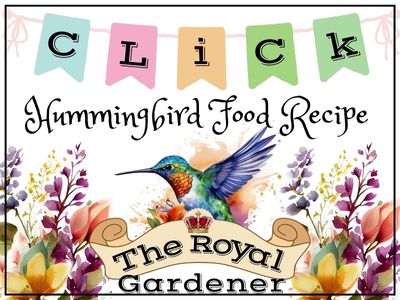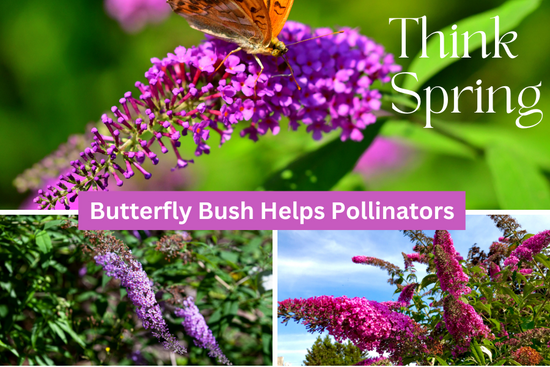Can I Use Honey in Hummingbird Nectar?
Honey is sweet and doesn't spoil easily, but it's not safe for hummingbirds. It can be harmful or deadly to them. It's best to use a different kind of nectar for these tiny birds. The type of sugar matters, cane sugar is the best choice.
About Honey
Honey is a thick, viscous, syrupy liquid produced by insects that break down floral nectar. The exact chemical composition of honey depends on a variety of factors, including…
- The type of insect that produces the honey
- The type of flower nectar or plant sap transformed into honey
- Climate type, humidity, and temperature during honey production affect overall quality.
Honey has glucose and fructose sugars, while floral nectar has mainly sucrose sugar. Floral nectar has a little glucose and fructose, but honey has much more.
Honey is a sweet natural substitute for sugar in cooking and baking recipes. It is rich and preferred for its sweetness. While honey can be a healthier option for many human foods, it isn't the best choice for feeding hummingbirds.

Why Honey is Bad for Hummingbirds
Honey is a thick, viscous, syrupy liquid produced by insects that break down floral nectar. The exact chemical composition of Honey depends on a variety of factors, including…
- The type of insect that produces Honey
- The type of flower nectar or plant sap transformed into Honey
- Climate type, humidity, and temperature during Honey production affect overall quality.
Honey has a higher ratio of glucose and fructose sugars, while floral nectar has mainly sucrose sugar. Floral nectar has a little glucose and fructose, but Honey has much more. Honey is a sweet natural substitute for sugar in cooking and baking recipes, and its ingredients can enhance the flavor of various dishes. It is rich and preferred for its sweetness. While Honey can be a healthier option for many human foods, it isn't the best choice for feeding hummingbirds.
Other Sweeteners to Avoid
Do not use honey or other sweeteners like corn syrup, molasses, or artificial sweeteners to make hummingbird nectar.Beet sugar, raw sugar, powdered sugar and brown sugar are not good for hummingbirds because they don't have the right nutrients. These sweeteners don't provide the necessary ingredients to give hummingbirds the energy and nutrition they need.
To attract hummingbirds, use plain white sugar and water to make nectar. Avoid using certain ingredients like alternative sweeteners for hummingbird nectar. Stick to plain white cane sugar and water for the most effective results in providing energy and nutrition.
Use plain white cane sugar to make hummingbird nectar at home. You can also buy nectar concentrates or mixes that mimic floral nectar. Avoid using dyes such as red food coloring or flavors. Use good nectar to attract more hummingbirds to your feeders and enjoy watching them when you refill.
Sugar Water Recipe
Here's a simple homemade hummingbird nectar recipe for making sugar water for hummingbirds: Ingredients for healthy hummingbird nectar:
- 1 part white granulated sugar cane
- 4 parts water
Instructions:
- Boil the tap water to ensure it's free of impurities. If you have access to filtered water, you can skip this step.
- Allow the water to cool to room temperature. Hot water can cause the sugar to crystallize and potentially harm the hummingbirds.
- Mix the sugar and water until you completely dissolve the sugar.
- Pour the sugar water solution into a clean hummingbird feeder.
- Hang the feeder outside in a location where hummingbirds frequent, preferably near flowers or bushes.
Remember to clean your feeder regularly, at least once a week, to prevent the growth of mold and bacteria. Additionally, during hot weather, it's essential to change the sugar water every two to three days to prevent fermentation.

Click To Print Recipe

Where to Place your Feeder
Placing your hummingbird feeder in the right location can greatly increase the chances of attracting hummingbirds. Here are some tips for where to place your feeder:
- Place your hummingbird feeder near flowers or natural food sources like gardens, shrubs, or trees to attract them. They are drawn to flowers, so this will make the feeder more appealing to them.
- Sheltered Area: Hang your feeder in a sheltered area, away from direct sunlight and strong winds. This keeps the sugar water fresh longer and creates a safe place for hummingbirds to eat comfortably.
- Put the feeder where you can easily see it from inside to watch the hummingbirds and enjoy their company. However, ensure it's not too close to windows to prevent collisions.
- Safety: Keep the feeder out of reach of predators like cats, and place it high enough to deter other pests like ants.
- Many Feeders: If you see many hummingbirds in your yard, put up more feeders spread out to lessen fighting.
- Quiet Area: Don't put the feeder where it's noisy or busy, as hummingbirds like calm places.
- Make sure the bird feeder is easy to access for cleaning and refilling, either nearby or securely hung on a hook.
Follow these tips to make a welcoming space for hummingbirds and improve your chances of attracting them to your feeder.
Conclusion:
Instead of honey, it's best to use a simple cane sugar water solution made with white granulated cane sugar and water. This solution closely mimics the nectar found in flowers and provides the necessary energy and hydration for hummingbirds without posing any health risks. Remember to clean and refill your feeder regularly to ensure the well-being of these fascinating birds.
FAQ About Homemade Hummingbird Nectar
You're eager to attract and nourish hummingbirds with homemade nectar, but you might have some questions. Here are concise answers to guide you.
Why is Honey bad for hummingbirds?
Honey can foster harmful bacteria and fungi, making it unsuitable for hummingbird consumption. Its complex sugars are difficult for hummingbirds to digest, potentially causing them harm and leading to digestive issues. Instead, you should prepare homemade hummingbird nectar using a simple sugar solution. This provides the necessary energy without the risks associated with Honey. By offering the right nectar, you ensure the well-being and vitality of these delightful birds in your garden.
Can I use brown or raw sugar instead of white sugar?
No, stick to white granulated cane sugar because it better mimics natural flower nectar. Brown or raw sugar contains added ingredients or impurities that might affect the delicate digestion system of hummingbirds. The pure sucrose found in white granulated sugar is most similar to the sugars they naturally consume from flowers, ensuring they get the needed energy effectively and safely.
What is the correct sugar to water ratio for homemade hummingbird nectar?
The ideal ratio is 1 part white granulated cane sugar to 4 parts water. This precise ratio mirrors the natural sucrose concentration found in flowers, making it the closest substitute to natural nectar available. Always ensure the sugar is completely dissolved and water is cooled to room temperature before offering it to the vibrant guests at your feeder.
How often should I change the homemade nectar in my feeder?
You should change the nectar every two to three days, especially during warm weather, to prevent fermentation and bacterial growth. This keeps the nectar fresh and safe for hummingbirds to enjoy. In cooler temperatures, weekly changes may suffice. Regular cleaning and replenishing of the feeders maintain a healthy and inviting environment for your feathered visitors.
Should I add red dye to my homemade hummingbird nectar?
No, it is unnecessary to add red dye to your homemade nectar. Many feeders are already designed with bright red to attract hummingbirds, and the dyes can pose health risks. By keeping the solution simple with just sugar and water, you ensure that you provide a safe source of nourishment without potential chemicals that might harm these delicate birds.
How can I prevent ants and other pests from getting to the feeder?
To prevent pests like ants from reaching the nectar, consider using an ant moat, a water-filled cup that hangs above or below the feeder to create a barrier they cannot cross. Cleanliness and secure placement are also important. Installing your feeder in a strategically elevated location away from pests will discourage unwanted visitors and keep the area vibrant with hummingbirds.By following these guidelines and sticking to the simple, effective homemade hummingbird nectar formula, you are creating a haven for these captivating creatures right in your backyard. Your diligence and care in choosing the best practices reflect a commitment to the well-being of the natural world around you. Celebrate every visit as a testament to your efforts and enjoy the continuous wonder that hummingbirds bring into your life.















